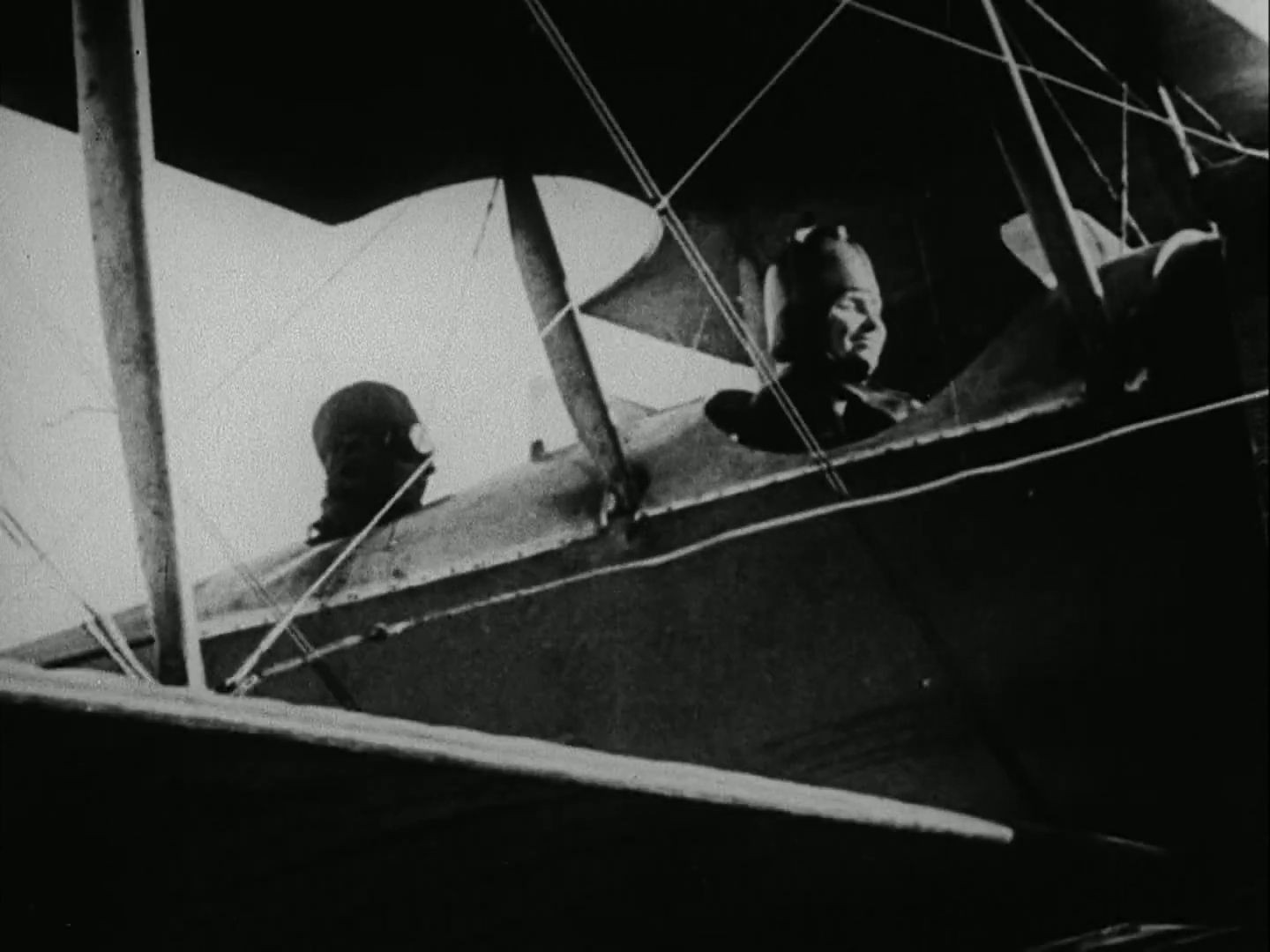Did Helen Keller Fly A Plane On Her Own? This question has captivated many, and flyermedia.net is here to provide clarity. Helen Keller, despite being both blind and deaf, experienced the thrill of piloting an aircraft, challenging perceptions and inspiring millions. This article explores the circumstances surrounding this remarkable event and the broader impact of her accomplishments, highlighting her contributions to aviation and disability advocacy, and offering resources for aviation enthusiasts and those seeking flight training.
Table of Contents
- Helen Keller’s Flight: Fact or Fiction?
- The 1946 Flight Over the Mediterranean
- How Did Helen Keller “Pilot” the Plane?
- Other Instances of Deaf-Blind Pilots
- Helen Keller’s Impact on Perceptions of Disability
- The Movie “Deliverance” and Early Aviation Experiences
- Later Flights and Presidential Encounters
- Understanding Helen Keller’s World
- Overcoming Challenges: Flight Training and Accessibility
- Aviation Technology and Sensory Substitution
- How flyermedia.net Supports Aviation Aspirations
- FAQ: Frequently Asked Questions About Helen Keller and Aviation
1. Helen Keller’s Flight: Fact or Fiction?
Yes, Helen Keller did pilot a plane. While it’s not accurate to say she flew it completely solo, she took the controls of an aircraft for about 20 minutes during a flight over the Mediterranean Sea in 1946. This event, though not a solo flight in the traditional sense, was a significant moment highlighting her remarkable capabilities and challenging societal perceptions of what people with disabilities could achieve. It symbolizes her broader efforts in disability advocacy and her determination to experience life to the fullest.
The event serves as an inspiration, underscoring that limitations are often self-imposed or societal constructs rather than actual barriers. Keller’s ability to take control of an aircraft, even with assistance, shattered stereotypes and broadened horizons for individuals with disabilities. This act, covered by various news outlets, showcased her determination and skill, proving that with the right support and opportunity, significant achievements are possible regardless of physical limitations. Her flight contributes to discussions around accessibility and inclusion within aviation, and by extension, other fields, advocating for a more inclusive and equitable society.
2. The 1946 Flight Over the Mediterranean
In 1946, Helen Keller was traveling through Europe on behalf of the American Foundation for the Overseas Blind, accompanied by her companion Polly Thomson. During a flight from Rome to Paris, while crossing the Mediterranean Sea, Keller was given the opportunity to take the controls of the aircraft. This moment was facilitated by the pilot and co-pilot, who were reportedly amazed by her sensitivity and touch on the controls. Thomson communicated the pilot’s instructions to Keller through tactile signing, pressing symbols into her hand.
 Helen Keller in the cockpit of an airplane, a still from the film Deliverance, 1919, showcasing her early aviation experiences.
Helen Keller in the cockpit of an airplane, a still from the film Deliverance, 1919, showcasing her early aviation experiences.
This event wasn’t just a publicity stunt; it was a genuine experience that allowed Keller to feel “the delicate movement” of the airplane, providing her with a unique sense of freedom. The flight demonstrated her ability to interact with complex machinery and challenged the prevailing attitudes toward disability. It highlighted her remarkable capacity to overcome physical limitations through sensory adaptation and determination. This episode remains a powerful symbol of her broader impact on societal attitudes and accessibility within the aviation industry.
3. How Did Helen Keller “Pilot” the Plane?
Helen Keller “piloted” the plane with the help of her companion, Polly Thomson, who translated the pilot’s instructions into tactile sign language. Thomson pressed symbols into Keller’s hand, allowing her to understand and respond to the directions. According to reports, Keller displayed a remarkable sensitivity on the controls, maintaining a steady and calm flight.
This experience was not about Keller performing a solo flight; it was about her experiencing the sensation of flying and demonstrating her ability to interact with complex machinery despite her disabilities. The co-pilot assisted in ensuring the safety of the flight, while Keller experienced the subtle movements and vibrations of the aircraft, gaining a unique sense of freedom and control.
The success of this endeavor underscores the importance of accessible communication and assistive technologies in enabling individuals with disabilities to participate in activities that might otherwise be considered impossible. It showcases how adaptive strategies and a supportive environment can unlock new experiences and opportunities, promoting a more inclusive and equitable world. This event also serves as a reminder of the potential within every individual, regardless of their physical limitations.
4. Other Instances of Deaf-Blind Pilots
Helen Keller was not the only deaf-blind individual to experience piloting an aircraft. For example, in 2012, Katie Inman, a 15-year-old who also uses tactile sign language, piloted a plane in Florida. Assisted by a flight instructor, Inman took control of the aircraft after takeoff and leveling out at 2,600 feet.
These instances demonstrate that Keller’s experience was not an isolated event but part of a broader trend of individuals with disabilities challenging conventional limitations and achieving remarkable feats in aviation. They highlight the potential for innovation in flight training and assistive technologies to make aviation accessible to a wider range of individuals. Such stories not only inspire but also advocate for greater inclusivity and accessibility within the aviation industry.
Such achievements also help to dismantle the stereotypes and lower expectations that often surround individuals with disabilities. By showcasing their ability to master complex tasks like piloting an aircraft, these individuals pave the way for more inclusive policies and greater opportunities in various fields, advocating for a world where everyone has the chance to pursue their dreams, regardless of their physical limitations.
5. Helen Keller’s Impact on Perceptions of Disability
Helen Keller’s life and accomplishments significantly impacted how society views disability. Before Keller, blindness and deafness were often associated with stigma and misunderstanding. Her emergence as a writer, communicator, and activist challenged these negative perceptions, demonstrating the intellectual and physical capabilities of individuals with disabilities.
Keller’s willingness to engage with the public and share her experiences helped to normalize disability, making it a more accepted and understood aspect of human diversity. Her advocacy contributed to the removal of social stigmas, opening doors for other individuals with disabilities to pursue education, employment, and other opportunities.
Her work also influenced policy and legislation, advocating for better accessibility and inclusion in various aspects of society. By challenging societal norms and expectations, Keller helped create a more inclusive environment where people with disabilities could thrive and contribute meaningfully to their communities. Her legacy continues to inspire efforts to promote disability rights and accessibility worldwide.
6. The Movie “Deliverance” and Early Aviation Experiences
In 1919, Helen Keller appeared in “Deliverance,” a biographical film about her life. This film provided her with her first experience in an airplane. Despite Keller’s reservations about the film’s accuracy, she was thrilled to have the opportunity to fly, as it was a novel and exciting experience at the time.
The inclusion of the flying scene in “Deliverance” was intended to showcase Keller’s ability to participate in activities that were typically associated with able-bodied individuals. Though somewhat staged, this experience allowed her to feel the sensation of flight and further challenge public perceptions of what people with disabilities could achieve. It also demonstrated her adventurous spirit and willingness to push beyond conventional boundaries.
The film played a role in raising public awareness about Keller’s capabilities and helped to broaden her reach as an advocate for disability rights. While the scene was partly promotional, it also served to inspire and encourage others to challenge their own limitations and pursue new experiences.
7. Later Flights and Presidential Encounters
After her initial flight experience in 1919, Helen Keller continued to embrace opportunities to fly. In 1931, she took an extended flight from Newark, New Jersey, to Washington, D.C., a journey of 200 miles (322 km). This flight culminated in a meeting with President Herbert Hoover, further highlighting her prominence and influence.
The New York Times covered the flight, reporting that Keller likened the plane to “a great graceful bird sailing through the illimitable skies.” This quote captures her sense of wonder and appreciation for the freedom that flight provided her. These later flights reinforced her image as an adventurous and accomplished individual, continuing to challenge societal expectations of people with disabilities.
Her interactions with prominent figures like President Hoover helped to elevate the issue of disability rights and accessibility on a national level. By showcasing her abilities and advocating for greater inclusion, Keller played a crucial role in shaping public policy and promoting a more equitable society. These experiences also underscored the importance of providing individuals with disabilities the opportunity to participate fully in all aspects of life.
8. Understanding Helen Keller’s World
Understanding Helen Keller’s world involves recognizing the unique challenges and sensory experiences she navigated as a deaf-blind individual. Keller primarily used tactile sign language to communicate, relying on touch to understand and interact with the world around her. This required a high level of sensitivity and adaptability, as well as the support of dedicated companions like Anne Sullivan and Polly Thomson.
Keller’s ability to learn, write, and advocate for disability rights despite her sensory limitations is a testament to her intelligence, determination, and resilience. It also highlights the importance of accessible education and communication methods in enabling individuals with disabilities to reach their full potential.
By understanding the specific challenges and needs of deaf-blind individuals, we can work towards creating a more inclusive and accessible society. This includes developing innovative technologies, providing specialized support services, and promoting greater awareness and understanding of disability. Keller’s legacy serves as a reminder of the importance of empathy and inclusivity in building a more equitable world.
9. Overcoming Challenges: Flight Training and Accessibility
Overcoming challenges in flight training for individuals with disabilities requires innovative approaches and adaptive technologies. While traditional flight training methods rely heavily on visual and auditory cues, alternative methods can be developed to accommodate individuals with sensory impairments.
For example, tactile flight simulation can provide a sensory-rich experience that allows aspiring pilots to learn the dynamics of flight through touch and vibration. Additionally, customized communication systems can enable instructors to provide real-time feedback and guidance to students with hearing impairments.
The development and implementation of these adaptive training methods can significantly increase accessibility to aviation for individuals with disabilities. By embracing innovation and prioritizing inclusivity, the aviation industry can open doors to a new generation of pilots and aviation professionals, fostering a more diverse and representative workforce.
Flyermedia.net is committed to highlighting resources and opportunities for accessible flight training, ensuring that aspiring pilots with disabilities have the support and tools they need to achieve their dreams.
10. Aviation Technology and Sensory Substitution
Aviation technology is continually evolving, and sensory substitution techniques are playing an increasingly important role in making flight more accessible. Sensory substitution involves converting information from one sensory modality into another, allowing individuals with sensory impairments to perceive and interact with their environment in new ways.
For example, visual information can be converted into tactile or auditory signals, enabling pilots with visual impairments to “see” the flight instruments and surroundings through touch or sound. Similarly, auditory information can be converted into visual or tactile signals, allowing pilots with hearing impairments to monitor aircraft systems and communicate with air traffic control.
These sensory substitution technologies have the potential to revolutionize flight training and operations for individuals with disabilities, opening up new possibilities for participation and achievement. Flyermedia.net is dedicated to showcasing the latest advancements in aviation technology and promoting their use to enhance accessibility and inclusivity within the industry.
11. How flyermedia.net Supports Aviation Aspirations
Flyermedia.net is your go-to resource for all things aviation. Whether you’re seeking flight training, exploring career opportunities, or simply passionate about aircraft, we provide comprehensive information and support to help you achieve your aviation aspirations.
- Flight Training: Discover a directory of accredited flight schools and training programs, complete with detailed information on curricula, instructors, and facilities.
- Aviation News: Stay up-to-date with the latest news, trends, and developments in the aviation industry through our regularly updated news section.
- Career Opportunities: Explore a wide range of aviation career paths, from piloting and engineering to air traffic control and maintenance, with insights into job requirements and career advancement opportunities.
- Aviation Technology: Learn about the latest advancements in aircraft technology, navigation systems, and safety equipment through our informative articles and expert analysis.
- Community Forum: Connect with fellow aviation enthusiasts, share your experiences, and ask questions in our active community forum.
Flyermedia.net is committed to fostering a vibrant and inclusive aviation community, where individuals from all backgrounds can pursue their passion for flight and achieve their dreams. Visit us today and take the first step towards your aviation adventure.
12. FAQ: Frequently Asked Questions About Helen Keller and Aviation
Here are some frequently asked questions about Helen Keller and her involvement with aviation:
- Did Helen Keller actually fly a plane?
Yes, Helen Keller took the controls of an airplane for about 20 minutes during a flight over the Mediterranean Sea in 1946. - Was Helen Keller a licensed pilot?
No, Helen Keller was not a licensed pilot. She experienced piloting an aircraft with the assistance of the pilot and co-pilot. - How did Helen Keller communicate in the cockpit?
Helen Keller communicated with the pilot through tactile sign language, with her companion Polly Thomson translating the pilot’s instructions into symbols she could feel. - Was Helen Keller the only deaf-blind person to fly a plane?
No, other deaf-blind individuals have also piloted aircraft, demonstrating that Keller’s experience was not an isolated event. - What impact did Helen Keller have on perceptions of disability?
Helen Keller’s life and accomplishments significantly impacted how society views disability, challenging negative perceptions and advocating for greater inclusion and accessibility. - How did Helen Keller’s early aviation experiences begin?
Helen Keller’s early aviation experiences began with her appearance in the 1919 film “Deliverance,” where she had the opportunity to fly in an airplane for the first time. - What were some of Helen Keller’s later flights?
In 1931, Helen Keller took an extended flight from Newark, New Jersey, to Washington, D.C., and met with President Herbert Hoover. - What challenges did Helen Keller face in her daily life?
Helen Keller faced the challenges of being both deaf and blind, relying on tactile sign language and the support of companions to navigate the world. - What adaptive technologies are available for flight training?
Adaptive technologies for flight training include tactile flight simulation and customized communication systems that enable individuals with sensory impairments to learn the dynamics of flight. - How can aviation technology enhance sensory substitution?
Aviation technology can enhance sensory substitution by converting information from one sensory modality into another, allowing pilots with sensory impairments to perceive and interact with their environment through touch, sound, or other senses.
Discover more about aviation, flight training, and career opportunities at flyermedia.net. Whether you’re an aspiring pilot or simply curious about the world of flight, we have the resources and information you need to take off on your aviation adventure. Visit us today to explore our comprehensive guides, connect with fellow aviation enthusiasts, and discover how you can turn your passion for flight into reality.

